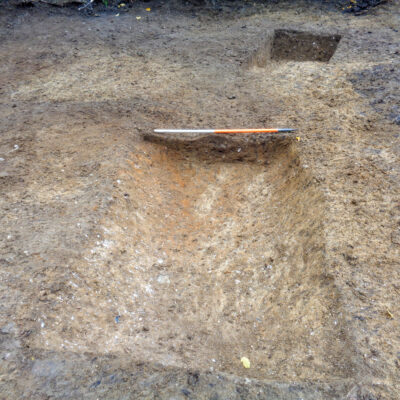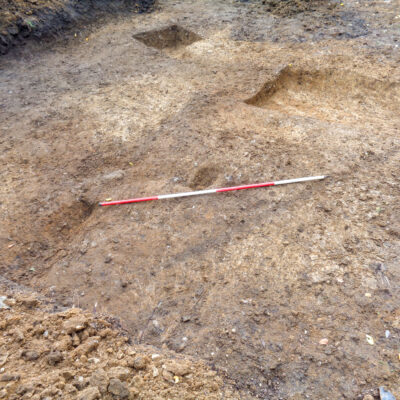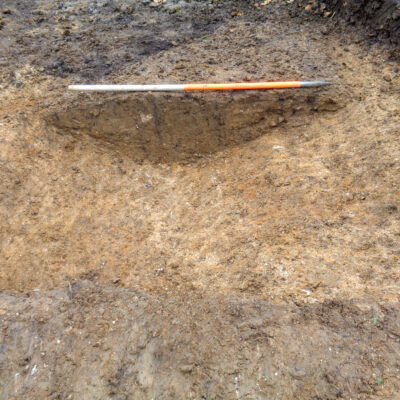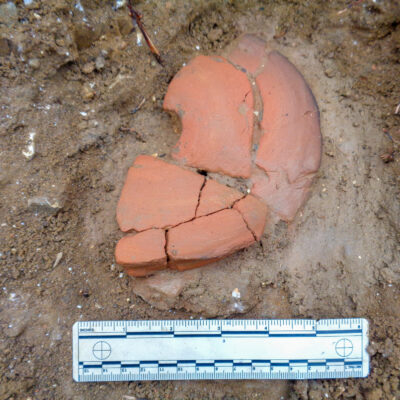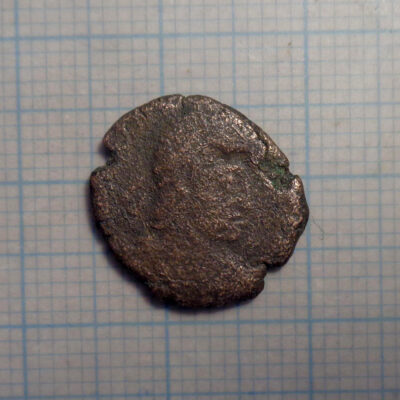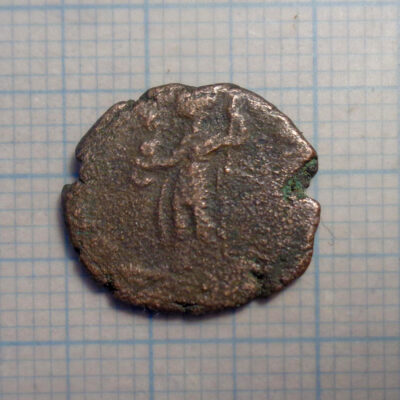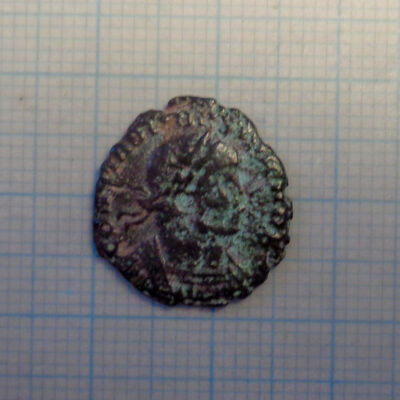Archaeological Mitigation, Suffolk
An earlier phase of Archaeological Evaluation revealed features dating from the Romano-British and Medieval to Post-medieval periods; a subsequent phase of Archaeological Excavation suggests that the site was situated on the outskirts of a rural settlement that was occupied between the late 1st and 3rd centuries AD.
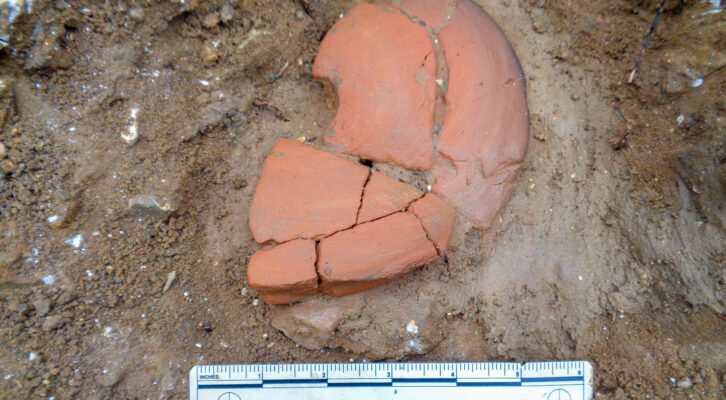
In Brief
Key Points
- Programme of Archaeological Observation and Mitigation
- Three distinct phases of activity identified
- 194 sherds of Roman pottery and 4 Roman coins uncovered
- Results of the fieldwork addressed regional research aims for the Romano-British period
Summary
An earlier phase of Archaeological Observation revealed a number of archaeological features, producing numerous pottery sherds, animal bone fragments and iron (Fe) nails. Furthermore, numerous small finds, including Romano-British coins, were found either in the features themselves or scattered within the topsoil/subsoil deposits of the wider area.
Assessment of the artefacts indicated two phases of occupation. Evidence for Romano-British activity was limited to a single pit located at the western extent of site, although residual artefacts were recovered from the majority of features. The second phase of activity dates from the Medieval to Post-medieval periods and was represented by three ditches and a pond/pit feature, possibly associated with the 17th to 19th Century forge located directly to the SE of site
A subsequent phase of Archaeological Excavation was undertaken, the results of which added to the collective knowledge of Romano-British settlement in the area, serving to address regional research aims for the period.
Results
The Archaeological Excavation established that the site appears to lie on the outskirts of a rural settlement occupied between the late 1st and 3rd Centuries AD, with three distinct phases of activity identified; these probably relate to the establishment and subsequent realignment of field boundaries.
Results from the excavation indicate that domestic, agricultural, and possibly lime burning were taking place on or within the vicinity of the site during the Roman period, while the presence of Romano-British glass and the quantity of table wares present in the pottery assemblage possibly indicate that the nearby settlement was at the upper end of its type.

